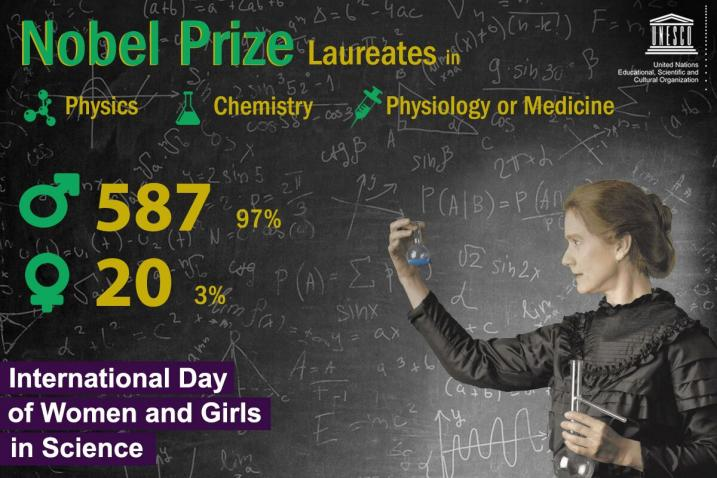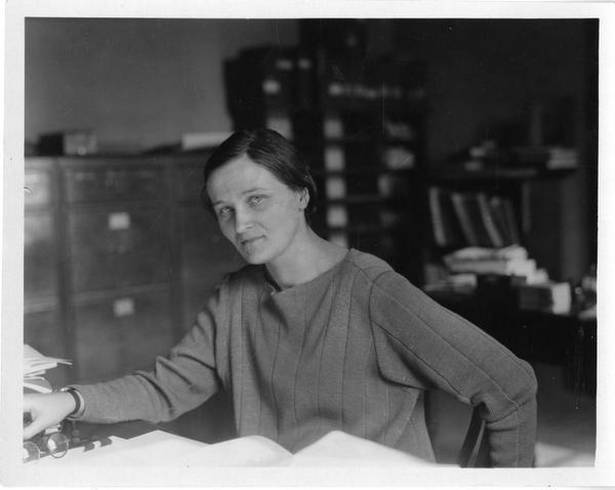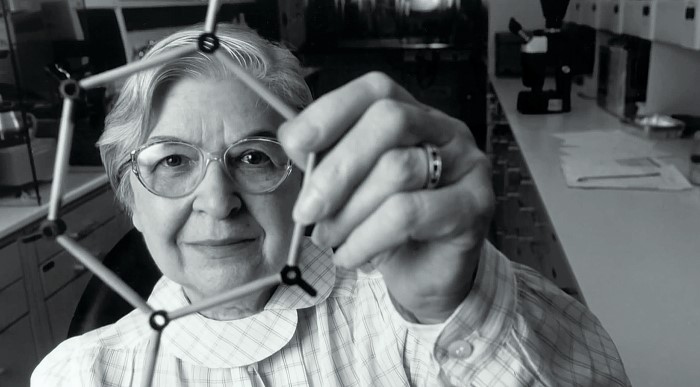
In News
Every year, the International Day of Women and Girls in Science is celebrated on 11th February.
Major Highlights
- The theme for 2021 is “Women Scientists at the forefront of the fight against Covid-19”.
- The pandemic highlighted the critical role of women researchers in different stages (knowledge on the virus, development of testing-techniques and vaccination) of the fight against Covid-19.
- The pandemic negatively impacted women scientists, contributed to widening the gender gap and revealed the gender disparities in the scientific system.
- These need to be addressed by new policies, initiatives and mechanisms to support women and girls in science.
- Aim: To promote full and equal access to and participation in science for women and girls.
- Gender equality is a global priority for the United Nations Educational, Scientific and Cultural Organization (UNESCO), and the support of young girls, their education and full ability to make the ideas heard are levers for development and peace.
- The Day is implemented by UNESCO and UN-Women, in collaboration with other institutions and civil society partners.
- On the day in 2021, the 6th International Day of Women and Girls in Science Assembly was held virtually at New York City, UN Headquarters.
- 2021 theme of the Assembly is “Beyond the Borders: Equality in Science for Society”.
- It focused on the value of the social aspects and cultural dimensions in Science, Technology and Innovation to enhance sustainable development programmes.
- 2021 theme of the Assembly is “Beyond the Borders: Equality in Science for Society”.
- Significance
- Science and gender equality are vital for the achievement of the internationally agreed development Goal 9 under 2030 Agenda for Sustainable Development.
- Goal 9 is about “Industry, Innovation and Infrastructure” and aims to build resilient infrastructure, promote sustainable industrialization and foster innovation.
- The annual observance recognises the critical role of women and girls in science and technology.
- Science and gender equality are vital for the achievement of the internationally agreed development Goal 9 under 2030 Agenda for Sustainable Development.
Data Analysis of Women in Science
- Global Status
- Currently, less than 30 per cent of researchers worldwide are women.
- Only around 30 per cent of all female students select Science, Technology, Engineering, Medicine (STEM) related fields in higher education, according to UNESCO data (2014-2016).
- Globally, female students’ enrolment is very low in Information Communication Technology (ICT) (3 percent), natural science, mathematics and statistics (5 percent) and in engineering, manufacturing and construction (8 percent).
- According to a study, the virtual presence of females with an identifiable STEM job is only 12 per cent of all.
- Indian Status
- Various studies and data reveal that a large number of women dropout from higher studies and research in science.
- Despite the increasing number of women in higher education in science, women’s participation at higher levels of science in tenured research positions has shown little increase.
- According to a NITI Aayog report of 2017, women constitute over one-third of the total science graduate and postgraduate degree holders, but comprise only 15-20% of the tenured faculty across research institutions and universities in India.

(Image Courtesy: UN) |
Reasons for Low Participation
- Long-standing biases and gender stereotypes create a gap between girls/women and science-related fields.

(Image Courtesy: UN Women) |
Suggestions
- Gender-neutral Perspective and Due Recognition: Participation of women and girls in science and technology should be strengthened through a gender-neutral perspective and also by recognising females for their contributions.
- Harnessing Women’s Talent: Tackling challenges of the Agenda for Sustainable Development rely on harnessing all talent which means including more women in these fields.
- Diversity in research expands the pool of talented researchers, bringing in fresh perspectives, talent and creativity.
- Elimination of Gender Stereotypes: Gender equality policies and programmes need to eliminate gender stereotypes through education, change social norms, promote positive role models of women scientists and build awareness at the highest levels of decision-making.
- Empowerment and Support at Work Place: There is a need to ensure that women and girls are not only participating in STEM fields, but are empowered to lead and innovate, and are supported by workplace policies and organizational cultures that ensure their safety, consider their needs and incentivize them.
Indian Schemes to Encourage Women in Science
- Science and Engineering Research Board-Promoting Opportunities for Women in Exploratory Research (SERB-POWER) Programme: It is specially designed to provide structured effort toward enhanced diversity in research to ensure equal access and weighted opportunities for Indian women scientists engaged in research and development activities.
- Mechanisms of Support
- SERB-POWER Fellowship.
- SERB-POWER Research Grants.
- Women scientists cannot hold the Fellowship and the Grant at the same time.
- Mechanisms of Support
- New Science Technology and Innovation Policy (STIP) 2020: STIP has a decentralized, bottom-up, and inclusive design process which aims to restrategize priorities, sectoral focus and methods of research and technology development for larger socio-economic welfare.
- Biotechnology Career Advancement and Re-orientation Programme (BioCARe): The Department of Biotechnology launched the programme in 2011 for women scientists. It is for career development of employed/unemployed women scientists upto 55 years of age for whom it is the first extramural research grant.
- Gender Advancement for Transforming Institutions (GATI): GATI-Framework Development for Advancing Gender Equity in Science and Technology and Higher Education in India, is an innovative overarching Pilot Project supported by the Department of Science and Technology (DST).
- Other Department of Science and Technology Schemes like
- Women Scientists Scheme (WOS), launched during 2002-03, aims at providing opportunities to women scientists and technologists between the age group of 27-57 years who had a break in their career but desired to return to mainstream.
- Indo-US Fellowship for Women in STEMM (WISTEMM) programme where women scientists can work in research labs in the US.
- Consolidation of University Research for Innovation and Excellence in Women Universities (CURIE) programme for improving R&D infrastructure and establishing state-of-the-art research facilities.
- Knowledge Involvement in Research Advancement through Nurturing (KIRAN) scheme for promoting women in science.
- Vigyan Jyoti Programme to encourage girls to take interest in science and build careers to create a level-playing field for the meritorious girls to pursue STEM.
Related Observances
- 8 March: International Women’s Day.
- 22 April: Girls in Information and Communications Technology Day.
- 11 October: International Day of the Girl Child.
- 15 October: International Day of Rural Women.
- 25 November: International Day for the Elimination of Violence against Women.
Notable Female Figures
| Name | Contributions |
| Esther Miriam Zimmer Lederberg
(1922-2006)
(source) |
|
| Cecilia Payne-Gaposchkin
(1900-1979)
|
|
| Stephanie Kwolek
(1923-2014)
(source) |
|
| Gerty Cori
(1896-1957)
|
|
| Janaki Ammal
(1897-1984)
|
|
| Nancy Grace Roman
(1925-2018)
(source) |
|
| Chien-Shiung Wu
(1912-1997)
|
|
| Lise Meitner
(1878-1968)
|
|
Previous article
Brent crude
Next article
Facts in News








